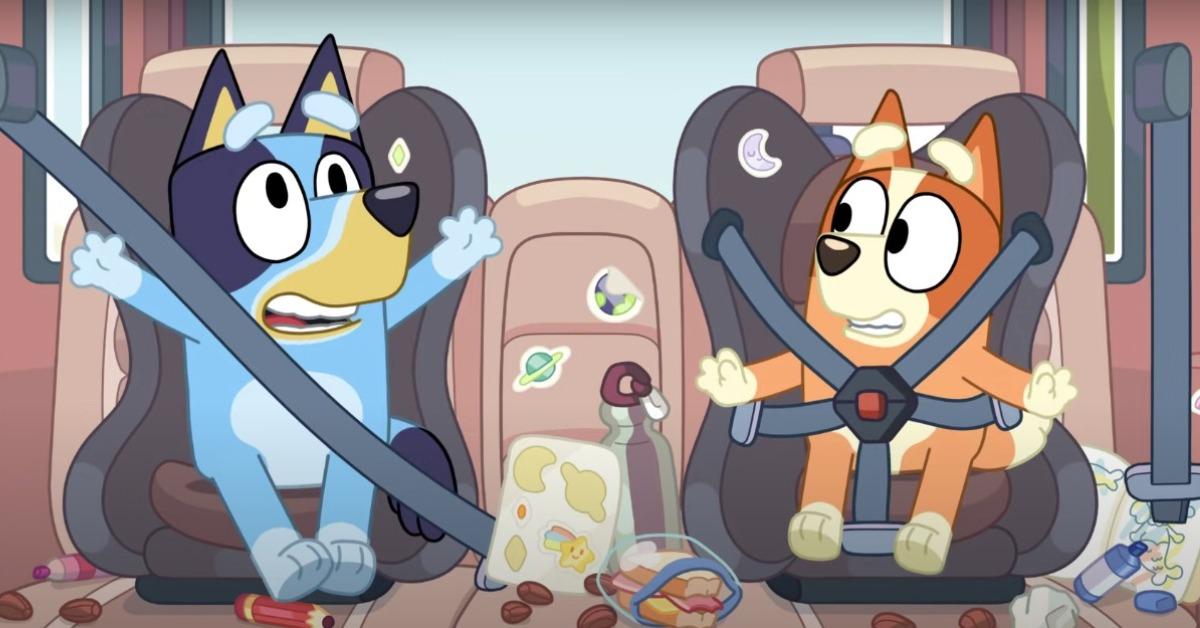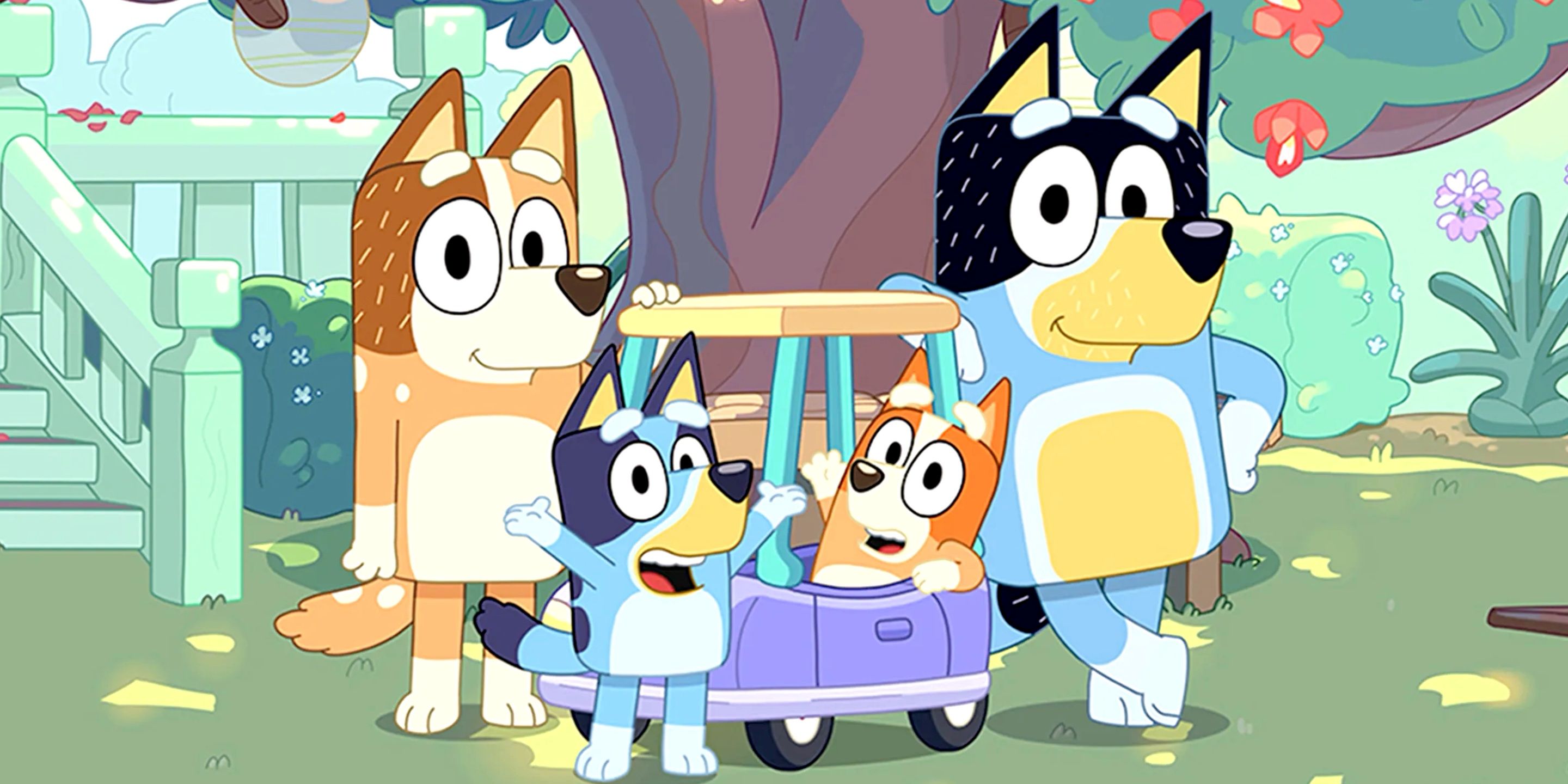Is Bluey A Boy Or A Girl? Decoding The Cartoon Dog!
Is Bluey, the vibrant blue heeler puppy from the beloved children's series, a boy or a girl? The answer, surprisingly to some, is a resounding girl, a fact that challenges long-held assumptions about gender and representation in children's entertainment.
The world of children's television is often a battleground of stereotypes, where characters are frequently pigeonholed into pre-defined roles based on their gender. Bluey, however, bravely breaks these molds. She's a playful, energetic, and imaginative character who embodies the spirit of childhood exploration, regardless of societal expectations. The show's creators deliberately chose to challenge these traditional gender norms, presenting a protagonist who enjoys activities and possesses characteristics often associated with boys, while still embracing her femininity.
The show, "Bluey," has captivated audiences worldwide, sparking conversations about gender roles, family dynamics, and the importance of imaginative play. The show is set in the vibrant city of Brisbane, Australia. The stories center around the life of Bluey, a six-year-old Blue Heeler puppy, and her family. Each episode follows Bluey, her younger sister Bingo, and their parents, Bandit and Chilli, as they navigate everyday life through imaginative games and adventures. These games often serve as a way for the family to learn, grow, and connect with each other.
The core of Bluey's identity is deeply rooted in her breed: the Australian Cattle Dog, commonly known as the Blue Heeler. This breed is not merely a visual characteristic but is central to the show's narrative. Bluey's father, Bandit, shares the iconic blue coloring, a dominant gene within the breed, while her mother, Chilli, and her sister, Bingo, exhibit the red heeler coat. This subtle detail adds depth to the characters' design and reinforces the show's commitment to authenticity.
The confusion about Bluey's gender often stems from the common association of the color blue with boys. In a world where pink is often designated for girls, and blue for boys, the show cleverly subverts these expectations. Bluey, despite her blue fur, defies this simplistic categorization. The creators intentionally use her blue appearance as a tool to dismantle those very notions of gendered color association. As the series progressed, producers firmly confirmed that Bluey is, in fact, a girl. The show actively works to steer the young dogs away from gender stereotypes, providing the young characters freedom in their play.
The program cleverly incorporates themes related to gender roles, providing a space for girls and boys to learn and grow. Bluey's character allows the audience to explore diverse characters as well as their emotions and growth. Bluey's adventures resonate with viewers because they present a refreshing perspective on what children can be interested in, and they defy the stereotypes that typically affect children's television.
- Kat Timpfs Due Date Unveiling The Timeline Amp Pregnancy Details
- Kofi Siriboes Relationships Dating Duckie Thot More 2024 Update
The show is a significant cultural force. The show's creators and producers have openly stated their intention to challenge traditional gender roles. It is refreshing for parents to see a children's show break these stereotypes. The goal is to help children learn about diverse characters, allowing them to have the freedom to explore a variety of interests and identities.The creators of "Bluey" have successfully created a show that appeals to both children and adults. "Bluey" is popular because of its ability to address universal themes like family, friendship, and growth. It is a show that many parents watch with their children. There are many adults who enjoy the show despite not having children.
Here is the information about Bluey and her family:
| Feature | Description |
|---|---|
| Character Name | Bluey Heeler |
| Gender | Female |
| Breed | Australian Cattle Dog (Blue Heeler) |
| Age | 6 years old |
| Personality | Playful, imaginative, energetic, curious |
| Family |
|
| Show | Bluey |
| Setting | Brisbane, Australia |
| Key Themes | Family, friendship, imagination, growing up, gender roles, play |
| Notable Features |
|
| Show's Purpose | To explore diverse characters and themes. |
| Reference | ABC Everyday |
The show's success lies in its ability to craft stories that resonate across genders. The adventures of Bluey, along with those of Bingo, Chilli, and Bandit, are relatable for all children. Bluey's challenges and triumphs are not defined by gender. This universality allows the show to foster a culture of inclusivity.
The world of "Bluey" isn't just about the central characters. The series is populated by a diverse cast of supporting characters. "Green Puppy," (voiced by Adam Peltzman), who is in the same class as Bluey. He is a mint green bulldog who communicates through gruff barks. Green Puppy is depicted with visible teeth, incisors, and short ears. The show's creators make sure that all the characters are represented, ensuring that the young audience understands that everyone should be treated equally.
In the 1940s, retailers and manufacturers promoted the association of blue with boys and pink with girls. This led to the increasing popularity of gendered children's clothing, toys, and other products. The show's willingness to move away from these outdated paradigms makes it a standout in the children's television landscape. It challenges the status quo and reinforces the idea that children of all genders can enjoy the same activities and interests.
The creators of "Bluey" have made it clear that Bluey is a girl, and the show celebrates this in various ways. The show also touches on other significant topics like family, friendship, and development. The program also emphasizes the value of imagination. The children and adults that watch the show often say they enjoy the show.
Many parents often have trouble with the way their children are seen by the public. The children's shows provide an opportunity for both girls and boys to be represented. This creates a more welcoming world for them to grow up in. The show is an important contribution to children's television, in its efforts to challenge gender norms.
The show is a testament to the power of storytelling, demonstrating how television can be a powerful force for social change. It does this by subtly challenging stereotypes and promoting inclusivity. It's a show that entertains while educating, and it's a show that's changing the landscape of children's entertainment.
- Kin Shriner Net Worth 2024 How Much Does The General Hospital Star Earn
- Is Simone Biles Pregnant Retiring Debunking Fox News Rumors

Is Bluey A Girl? YouTube

Is Bluey a Boy or a Girl? 'Bluey' Executive Producer Weighs in (EXCLUSIVE)

Is Bluey a Boy or a Girl?